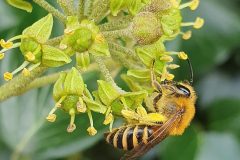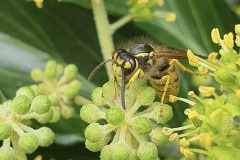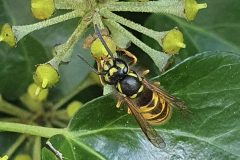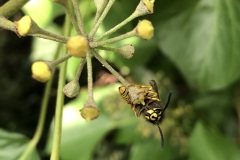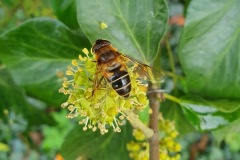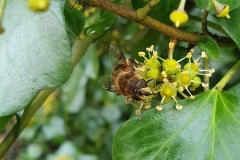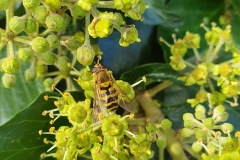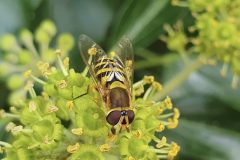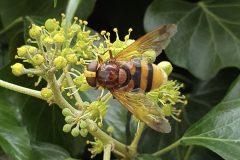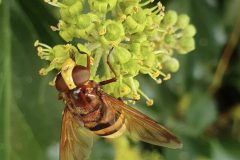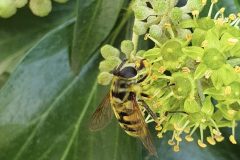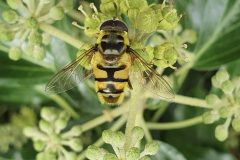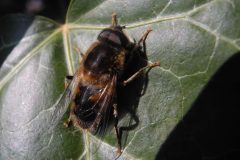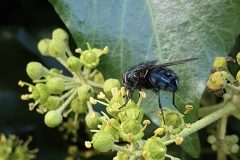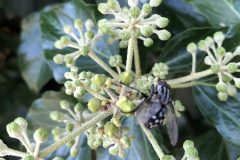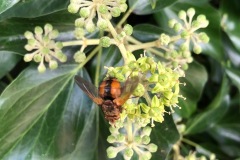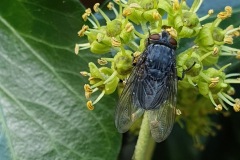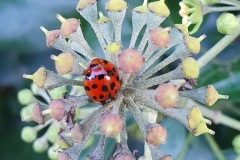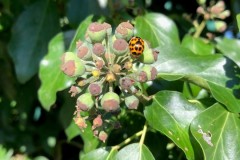Hedra helix, the common Ivy, flowers from September to November and is the main source of pollen and nectar in the autumn . This is particularly important to many insects before they go into hibernation. Only mature ivy with rounded leaves produce flowers.
The most abundant visitors to ivy are bees, social wasps, hoverflies and flies. Other visitors include ladybirds.
Bees
Social wasps
Hoverflies
Other flies
Other invertebrates
Bees
Social Wasps
The two wasps photographed on Ivy are almost identical but you can tell them apart by their facial markings.
The Common Wasp (identified by N. Boyle ) has a black anchor shape on its face.
The worker German wasp ( identified by YNU Recorder Andy Millard ) has a complete yellow band right down the middle of its head. Also a black spot in the centre of its yellow clypeus (above the mandibles ) with a hint of two smaller black spots below forming a triangle.
Nora
Hover Flies
Tips on distinguishing between Eristalis pertinax and Eristalis tenax
Eristalis pertinax is the only species of Eristalis which has yellowy brown fore and mid tarsi, which Andrew Grayson , YNU Recorder for Diptera, pointed out when he identified the image above.
Eristalis tenax has stripy eyes and a broad facial stripe-see Britain’s Hoverflies by Stuart Ball and Roger Morris.
Other Flies
Calliphoridae includes blow flies and bottle flies. They have grey/blue metallic bodies and their body and legs are covered with black bristle -like hairs. If the eyes don’t meet at the top of the head, theyare female, otherwise, male.
